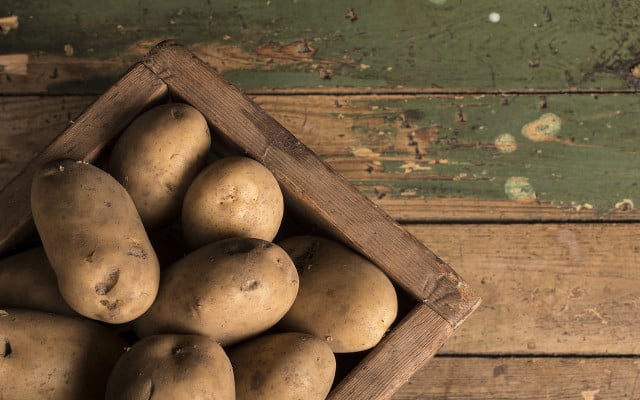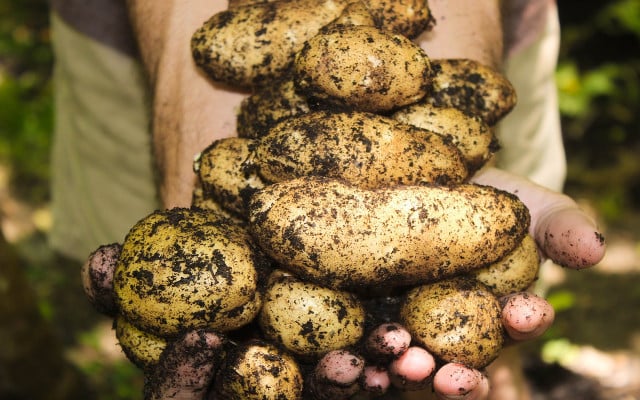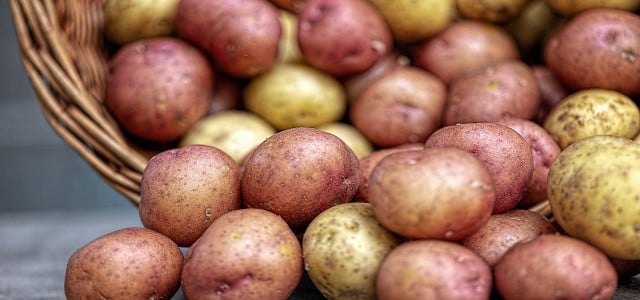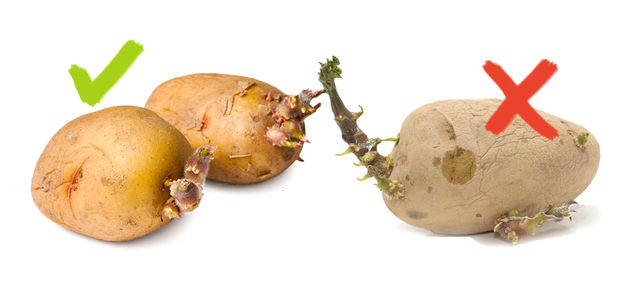Storing potatoes correctly is not difficult at all. The most important thing to pay attention to is protecting them from light. Otherwise, they will quickly start to sprout or get green spots. Keep reading to find out the best ways to store potatoes.
Protect Potatoes From Light and Heat

If you’re trying to figure out where to store potatoes, you should know: When exposed to heat and light, potatoes begin to sprout quickly. These sprouts take away important nutrients from the potato, causing it to shrink and lose its taste and firmness. Did you know: the eyes of the potato are poisonous and should not be consumed.
Here’s why it’s so important to store potatoes in the right place: Sprouted potatoes can have a high concentration of toxic glycoalkaloids called solanine and chaconine. Toxicity increases when the potatoes are immature (green) through damage to the tuber, high storage temperature, and storage in bright light. Another thing to watch out for: potatoes can easily become moldy — one rotten tuber can spoil the whole bunch.
Storing potatoes correctly means they can last for several months, all the way until the next season. This is great because you can purchase and enjoy local produce all year round. Late potatoes are ripe in September and October, and early potatoes from June onwards.
How and Where to Store Potatoes
- Choose a dark, cool place – like a cellar, pantry, or shed. If you’re tight on space or don’t have access to a cellar, you can also store the potatoes in a sack (like this one on Amazon**) to protect them from light.
- Maintain a consistent temperature. A bit like Goldilocks, it cannot be too warm or too cold — it has to be just right. The ideal temperature for storing potatoes is between 39°F and 46°F. Too warm and the potatoes will sprout, too cold and the starch will convert to sugar.
- Store them in a dry and airy place to avoid the potatoes rotting or becoming moldy. One of the best ways to store potatoes is to stack them loosely on top of one another in a linen bag or wooden box — and don’t even think about storing them in plastic bags.
- Check in on them from time to time. If you notice small shoots have formed, eat those ones sooner rather than later. Remove rotten potatoes immediately and throw them into the compost. Through regular rearrangement, you can ensure sufficient ventilation.



- Protect the potatoes from frost if storing them in a cold cellar or shed. Potatoes should never be frozen or put into a freezer.
- For best results, keep your potatoes separate from other fruits and vegetables. Some people claim that storing potatoes with apples will keep them from sprouting, however, there is not enough evidence supporting that claim. Same with bins for potatoes and onions: a great idea in theory, but not necessarily in practice.
- For long-term storage over several months, only undamaged potatoes with unbroken skins and no dents or bruises are suitable.
- The ideal way of storing potatoes long-term is to evenly distribute them on slatted (wooden) frames. That way they should keep for months.
Important Information regarding Health-related Topics.
** Links to retailers marked with ** or underlined orange are partially partner links: If you buy here, you actively support Utopia.org, because we will receive a small part of the sales proceeds. More info.Do you like this post?







